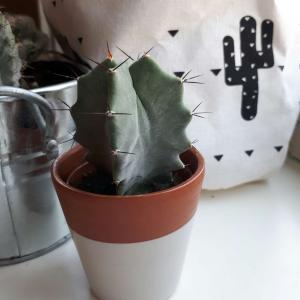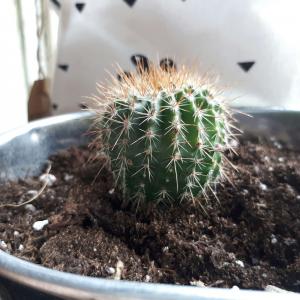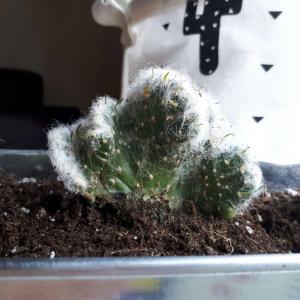文章
Miss Chen
2017年08月29日

Rose (Rosa spp.) cuttings root slowly and with little indication on top of the soil that there's anything going on below it. The first sign that the process is progressing – the appearance of new foliage -- comes months after you plant the cutting. It will be several more months until the cutting has taken root enough to be transplanted outdoors. It can be a frustrating wait for the impatient, but it's the best way to get a new rosebush that's identical to the parent plant.

The Best of Times
Roses, depending on the species, cultivar or variety, are hardy in all U.S. Department of Agriculture plant hardiness zones. Know the zones for your particular plant, because the best time to take a rose cutting depends largely on climate. Typically, cuttings are ready in late fall, just after the last of the season's flowers fade and the weather cools. Cuttings can be taken in spring, as long as you wait until the stem is no longer soft and green.
Plan Ahead
Once the cutting is removed from the bush, work quickly so it doesn't dry out. Prepare in advance before you head out to the garden: Be sure your pruning shears are razor sharp and disinfected. Soak them for five minutes in a solution of 1 part bleach and 3 parts water; rinse them with water and allow them to air dry before using them. Fill a 4-inch nursery pot that has drainage holes in the bottom with a combination of 3 parts sand and 1 part peat moss and pour water over the mixture until it is saturated. Use your finger or a pencil to create a 3- to 4-inch deep planting hole, and set the pot aside to drain. Grab a moist paper towel and a plastic produce bag as you head out to the garden.

Be Choosy
Look for a rose stem that has recently bloomed. Measure 6 inches, from the tip of the stem back toward the main stem, and make a 45-degree angled cut to remove it from the bush. Immediately wrap the stem in the moist paper towel and enclose it in the bag. Do not allow the cutting to dry out for even a short amount of time.
Plant It
Remove all the foliage from the bottom part of the stem, and allow three or four leaves to remain at the top. If there are hips or faded flowers, remove those as well. Use a small, sharp knife to scrape the outer layer of bark from the bottom inch of stem. Dip that portion of the stem in water, and then roll it in rooting hormone powder until it's covered. Immediately stick the hormone-tipped end of the cutting into the prepared hole in the planting medium and use your hands to pack the medium around the cutting.
Care While Rooting
Rose cuttings require humidity to produce roots, so mist the plant with water from a spray bottle. Insert four wood craft sticks, equally spaced, into the planting medium around the inside perimeter of the pot. Slide the pot into a plastic bag, adjusting the plastic so that the sticks hold it away from the cutting. Secure the bag and place the pot in an outdoor area where there's filtered sunlight. Open the bag for about 15 minutes every other day to allow air to circulate. Remove the bag when you notice new foliage. Water the soil to keep it moist but otherwise do not disturb the cutting until it's ready to be planted in a permanent spot outdoors -- typically one year from taking the cutting.

The Best of Times
Roses, depending on the species, cultivar or variety, are hardy in all U.S. Department of Agriculture plant hardiness zones. Know the zones for your particular plant, because the best time to take a rose cutting depends largely on climate. Typically, cuttings are ready in late fall, just after the last of the season's flowers fade and the weather cools. Cuttings can be taken in spring, as long as you wait until the stem is no longer soft and green.
Plan Ahead
Once the cutting is removed from the bush, work quickly so it doesn't dry out. Prepare in advance before you head out to the garden: Be sure your pruning shears are razor sharp and disinfected. Soak them for five minutes in a solution of 1 part bleach and 3 parts water; rinse them with water and allow them to air dry before using them. Fill a 4-inch nursery pot that has drainage holes in the bottom with a combination of 3 parts sand and 1 part peat moss and pour water over the mixture until it is saturated. Use your finger or a pencil to create a 3- to 4-inch deep planting hole, and set the pot aside to drain. Grab a moist paper towel and a plastic produce bag as you head out to the garden.

Be Choosy
Look for a rose stem that has recently bloomed. Measure 6 inches, from the tip of the stem back toward the main stem, and make a 45-degree angled cut to remove it from the bush. Immediately wrap the stem in the moist paper towel and enclose it in the bag. Do not allow the cutting to dry out for even a short amount of time.
Plant It
Remove all the foliage from the bottom part of the stem, and allow three or four leaves to remain at the top. If there are hips or faded flowers, remove those as well. Use a small, sharp knife to scrape the outer layer of bark from the bottom inch of stem. Dip that portion of the stem in water, and then roll it in rooting hormone powder until it's covered. Immediately stick the hormone-tipped end of the cutting into the prepared hole in the planting medium and use your hands to pack the medium around the cutting.
Care While Rooting
Rose cuttings require humidity to produce roots, so mist the plant with water from a spray bottle. Insert four wood craft sticks, equally spaced, into the planting medium around the inside perimeter of the pot. Slide the pot into a plastic bag, adjusting the plastic so that the sticks hold it away from the cutting. Secure the bag and place the pot in an outdoor area where there's filtered sunlight. Open the bag for about 15 minutes every other day to allow air to circulate. Remove the bag when you notice new foliage. Water the soil to keep it moist but otherwise do not disturb the cutting until it's ready to be planted in a permanent spot outdoors -- typically one year from taking the cutting.
1
0
文章
Dummer. ゛☀
2017年08月29日

Everything old is new again, and edible landscaping is an example of this adage. If you are searching for a ground cover to incorporate in the landscape, look no farther than Claytonia miner’s lettuce.
What is Miner’s Lettuce?
Miners lettuce is found from British Columbia south down to Guatemala and east into Alberta, North Dakota, South Dakota, Wyoming, Utah and Arizona. Claytonia miner’s lettuce is also known as Claspleaf miner’s lettuce, Indian lettuce and by its botanical name of Claytonia perfoliata. The generic name of Claytonia is in reference to a botanist of the 1600’s by the name of John Clayton, while its specific name, perfoliata is due to the perfoliate leaves which completely encircle the stem and are attached at the base of the plant.
Is Miner’s Lettuce Edible?
Yes, miner’s lettuce is edible, hence the name. Miners used to eat the plant as salad greens, as well as the edible blossoms and stems of the plant. All these portions of Claytonia can be eaten either raw or cooked and are a great source of vitamin C.
Care of Claytonia Plant
Miner’s lettuce growing conditions tend to be cool and moist. This aggressive self-seeding plant can overwinter in USDA zone 6 and warmer and is an excellent edible ground cover. Miner’s lettuce growing conditions in the wild tend towards shaded sites such as under tree canopies, oak savannas or western white pine groves and at low to medium elevations. Claytonia miner’s lettuce can be found in soil conditions from sand, gravel road tar, loam, rock crevices, scree and river silt.
The plant is propagated via seed and germination occurs rapidly, only 7-10 days until emergence. For home garden cultivation, seed may be dispersed or plants set in virtually any soil type, although Claytonia thrives in moist, peaty soil. Plant Claytonia 4-6 weeks before the last frost when soil temperatures are between 50-55 degrees F. (10-12 C.) in a shaded to partially shaded location, in rows that are 8-12 inches apart, ¼ inch deep and space the rows ½ inch away from each other.
From early to mid-spring and again in late summer to mid-fall for fall and winter harvest, Claytonia can be successively seeded for a continuous rotation of this edible green. Unlike many greens, Claytonia retains its flavor even when the plant is in bloom, however, it will become bitter when the weather becomes hot.

What is Miner’s Lettuce?
Miners lettuce is found from British Columbia south down to Guatemala and east into Alberta, North Dakota, South Dakota, Wyoming, Utah and Arizona. Claytonia miner’s lettuce is also known as Claspleaf miner’s lettuce, Indian lettuce and by its botanical name of Claytonia perfoliata. The generic name of Claytonia is in reference to a botanist of the 1600’s by the name of John Clayton, while its specific name, perfoliata is due to the perfoliate leaves which completely encircle the stem and are attached at the base of the plant.

Is Miner’s Lettuce Edible?
Yes, miner’s lettuce is edible, hence the name. Miners used to eat the plant as salad greens, as well as the edible blossoms and stems of the plant. All these portions of Claytonia can be eaten either raw or cooked and are a great source of vitamin C.
Care of Claytonia Plant
Miner’s lettuce growing conditions tend to be cool and moist. This aggressive self-seeding plant can overwinter in USDA zone 6 and warmer and is an excellent edible ground cover. Miner’s lettuce growing conditions in the wild tend towards shaded sites such as under tree canopies, oak savannas or western white pine groves and at low to medium elevations. Claytonia miner’s lettuce can be found in soil conditions from sand, gravel road tar, loam, rock crevices, scree and river silt.

The plant is propagated via seed and germination occurs rapidly, only 7-10 days until emergence. For home garden cultivation, seed may be dispersed or plants set in virtually any soil type, although Claytonia thrives in moist, peaty soil. Plant Claytonia 4-6 weeks before the last frost when soil temperatures are between 50-55 degrees F. (10-12 C.) in a shaded to partially shaded location, in rows that are 8-12 inches apart, ¼ inch deep and space the rows ½ inch away from each other.

From early to mid-spring and again in late summer to mid-fall for fall and winter harvest, Claytonia can be successively seeded for a continuous rotation of this edible green. Unlike many greens, Claytonia retains its flavor even when the plant is in bloom, however, it will become bitter when the weather becomes hot.
0
0
文章
Miss Chen
2017年08月29日

Climbing roses are a great way to add new dimension--and height--to your yard or garden. They are typically easier to care for and more vigorous than other roses. If you have grown roses before, understand that caring for climbing roses is not exactly the same as caring for other types of roses. Although some of their requirements are similar, many things are different.

Step 1
Plant climbers in an area that receives plenty of sun. While some climbers will do well in partial shade--even up to half a day of shade--most need plenty of light. In general, lighter colored climbing roses will be more tolerant to shade the darker-colored roses.
Step 2
Amend clay and sandy soils with compost, manure, mulch or peat moss. Or plant the roses in an area that has rich, loamy soil with good drainage.
Step 3
Cover soil with 2 to 4 inches of organic mulch such as straw, pine needles, buckwheat hulIs, ground corn cobs, peat moss, wood chips, shredded bark, cottonseed/cocoa bean hulls, chopped leaves, peat nuggets or grass clippings. This will keep the soil moist and the roots cool. Mulch in the spring while the rose bush is still dormant.
Step 4
Water climbing roses, if necessary, so that they get at least 1 inch of water per week and 2 inches of water if planted in sandy soil. Water in the morning and avoid wetting the leaves to prevent fungus problems.
Step 5
Fertilize in the spring after pruning. Use a dry, commercial rose fertilizer that has a slow release form of nitrogen. Apply about 1/2-cup to the soil. During the summer, apply a foliar spray of diluted liquid fertilizer (50 percent strength) every 3 to 4 weeks up until 6 weeks before the first frost is expected.
Step 6
Support climbing roses by tying the canes to a trellis, frame or similar structure. Tie them loosely with string, soft cloth or plastic. Climbing roses do not have tendrils or suckers like vines, so they require external supports to grow vigorous. If possible, allow your roses to grow horizontally, than vertically, as they will produce more flowers.

Step 7
Prune roses once they are at least 3 to 4 years old. In the spring, remove any dead wood, weak canes and any canes to avoid overcrowding or crossing. You will only need to prune every other year, although hardy climbers can be pruned every year. Your goal in pruning is to keep the roses in the area you want and ensure that only strong canes remain, not to limit its growth. Use only sharp, clean pruning shears and make slanting cuts about 1/4 inch above a growth bud.
Step 8
Deadhead roses by removing any spent flowers. Cut back the stem to a leaflet or a bud with 5 leaves.
Step 9
Protect climbing roses in the winter if you live in an area where temperatures frequently get and stay below freezing. For the best results, remove the canes from their support and cover them with soil. If you can't remove them from their supports, make sure they are securely tied and cover them with a burlap screen or similar material. Also, cover the base of the plant with soil or mulch.

Step 1
Plant climbers in an area that receives plenty of sun. While some climbers will do well in partial shade--even up to half a day of shade--most need plenty of light. In general, lighter colored climbing roses will be more tolerant to shade the darker-colored roses.
Step 2
Amend clay and sandy soils with compost, manure, mulch or peat moss. Or plant the roses in an area that has rich, loamy soil with good drainage.
Step 3
Cover soil with 2 to 4 inches of organic mulch such as straw, pine needles, buckwheat hulIs, ground corn cobs, peat moss, wood chips, shredded bark, cottonseed/cocoa bean hulls, chopped leaves, peat nuggets or grass clippings. This will keep the soil moist and the roots cool. Mulch in the spring while the rose bush is still dormant.
Step 4
Water climbing roses, if necessary, so that they get at least 1 inch of water per week and 2 inches of water if planted in sandy soil. Water in the morning and avoid wetting the leaves to prevent fungus problems.
Step 5
Fertilize in the spring after pruning. Use a dry, commercial rose fertilizer that has a slow release form of nitrogen. Apply about 1/2-cup to the soil. During the summer, apply a foliar spray of diluted liquid fertilizer (50 percent strength) every 3 to 4 weeks up until 6 weeks before the first frost is expected.
Step 6
Support climbing roses by tying the canes to a trellis, frame or similar structure. Tie them loosely with string, soft cloth or plastic. Climbing roses do not have tendrils or suckers like vines, so they require external supports to grow vigorous. If possible, allow your roses to grow horizontally, than vertically, as they will produce more flowers.

Step 7
Prune roses once they are at least 3 to 4 years old. In the spring, remove any dead wood, weak canes and any canes to avoid overcrowding or crossing. You will only need to prune every other year, although hardy climbers can be pruned every year. Your goal in pruning is to keep the roses in the area you want and ensure that only strong canes remain, not to limit its growth. Use only sharp, clean pruning shears and make slanting cuts about 1/4 inch above a growth bud.
Step 8
Deadhead roses by removing any spent flowers. Cut back the stem to a leaflet or a bud with 5 leaves.
Step 9
Protect climbing roses in the winter if you live in an area where temperatures frequently get and stay below freezing. For the best results, remove the canes from their support and cover them with soil. If you can't remove them from their supports, make sure they are securely tied and cover them with a burlap screen or similar material. Also, cover the base of the plant with soil or mulch.
1
1
文章
Dummer. ゛☀
2017年08月29日

As gardeners, some of us grow plants for food, some because they are beautiful and aromatic, and some for the wild critters to feast on, but all of us are interested in a new plant. Unique specimens that will have the neighbors talking include Scorpiurus muricatus plants, also known as prickly scorpion’s tail plant. What is prickly scorpion’s tail and is Scorpiurus muricatus edible? Let’s learn more about caring for prickly scorpion’s tail.
What is Prickly Scorpion’s Tail?
Scorpiurus muricatus is an unusual annual legume native to southern Europe. Listed by Vilmorin in the 1800’s, the plant has unique pods that twist and roll in upon themselves. The name “prickly scorpion’s tail” was no doubt given due to the resemblance but its other common name of “prickly caterpillar” is far more apt in my opinion. The pods do indeed look just like fuzzy, green caterpillars. Scorpiurus muricatus plants are most often used as a ground cover. They have lovely tiny yellow flowers that are hermaphroditic, having both male and female organs. This herbaceous annual blooms continuously from mid-summer. A member of the Papilionacea family, the plants attain a height of between 6-12 inches.
Caring for Prickly Scorpion’s Tail
Seeds can be direct sown outdoors after all danger of frost has passed or inside for a jump start. Sow seed ¼ inch beneath the soil 3-4 weeks before the last frost if sowing indoors. Germination time for prickly scorpion’s tail is 10-14 days. Choose a site in sun to partial shade. The plant is not too picky regarding its soil and can be sown in sandy, loamy or even heavy clay as long as the soil is well draining. Soil can be acidic, neutral to alkaline. When caring for prickly scorpion’s tail, keep the plants moist to a little dry, not sodden.
Oh, and the burning question. Is Scorpiurus muricatus edible? Yes, but it has an uninteresting flavor and is a bit prickly. It would make a great icebreaker at your next party tossed casually in amongst the green salad though! This plant is fun and a historical oddity. Allow the pods to dry on the plant and then break them open to collect the seeds. Then pass them on to a friend so he/she can gross out the kids with caterpillars in their food.

What is Prickly Scorpion’s Tail?
Scorpiurus muricatus is an unusual annual legume native to southern Europe. Listed by Vilmorin in the 1800’s, the plant has unique pods that twist and roll in upon themselves. The name “prickly scorpion’s tail” was no doubt given due to the resemblance but its other common name of “prickly caterpillar” is far more apt in my opinion. The pods do indeed look just like fuzzy, green caterpillars. Scorpiurus muricatus plants are most often used as a ground cover. They have lovely tiny yellow flowers that are hermaphroditic, having both male and female organs. This herbaceous annual blooms continuously from mid-summer. A member of the Papilionacea family, the plants attain a height of between 6-12 inches.

Caring for Prickly Scorpion’s Tail
Seeds can be direct sown outdoors after all danger of frost has passed or inside for a jump start. Sow seed ¼ inch beneath the soil 3-4 weeks before the last frost if sowing indoors. Germination time for prickly scorpion’s tail is 10-14 days. Choose a site in sun to partial shade. The plant is not too picky regarding its soil and can be sown in sandy, loamy or even heavy clay as long as the soil is well draining. Soil can be acidic, neutral to alkaline. When caring for prickly scorpion’s tail, keep the plants moist to a little dry, not sodden.

Oh, and the burning question. Is Scorpiurus muricatus edible? Yes, but it has an uninteresting flavor and is a bit prickly. It would make a great icebreaker at your next party tossed casually in amongst the green salad though! This plant is fun and a historical oddity. Allow the pods to dry on the plant and then break them open to collect the seeds. Then pass them on to a friend so he/she can gross out the kids with caterpillars in their food.
0
0
文章
Dummer. ゛☀
2017年08月29日

A lot of times when you move into a new home, you look around the yard and think about everything you need to do to make the yard yours. Transplanting things is sometimes the most economical way to do that. Let’s look at how to transplant monkey grass.
Tips for Transplanting Monkey Grass
If you look around and find that you have monkey grass growing here and there, you have a great starting point. All you need to do is dig some up, roots and all, and move it somewhere else.
For instance, if you find that monkey grass grows well around the front walkway of your new home, you could pull a few sprigs of it up, including the roots, and transplant monkey grass under the bushes in front of the house. You will find that Liriope grass transplanting is easy this way, as it will flourish and create a nice grass skirt under the bushes.
When transplanting monkey grass, make sure you let it take strong root. Then you might want to spend some extra time raking it for the first few weeks so that any carpet grass runners that grow over top of it can be removed. They try to share the space with the monkey grass, but monkey grass grows so thick that the carpet grass can’t get its roots if the monkey grass is established. You might decide to make a new island garden. If so, you can transplant monkey grass into the island to create a frame for the bed or even to make it a nice ground cover throughout the bed.
When to Plant Monkey Grass
Knowing when to plant monkey grass or transplant it will help ensure it survives better after being transplanted. Wait until there is no chance of frost and it should be safe to transplant through midsummer. After transplanting monkey grass, it will need time to establish itself to survive the cold weather and after midsummer, it may no be able to do this. Anytime you make a new flower bed, go ahead and pluck a few pieces of monkey grass to put in it. Liriope grass transplanting works well so long as you include roots with the grass you picked, so it will grow pretty much wherever you plant it.
The only thing to watch out for when transplanting monkey grass is that it can be quite invasive if put in the wrong place. Just keep it contained to the areas you want it in, and be sure to pluck it from areas you don’t. This is how hardy monkey grass is, and you don’t want it to take over your whole garden.

Tips for Transplanting Monkey Grass
If you look around and find that you have monkey grass growing here and there, you have a great starting point. All you need to do is dig some up, roots and all, and move it somewhere else.
For instance, if you find that monkey grass grows well around the front walkway of your new home, you could pull a few sprigs of it up, including the roots, and transplant monkey grass under the bushes in front of the house. You will find that Liriope grass transplanting is easy this way, as it will flourish and create a nice grass skirt under the bushes.

When transplanting monkey grass, make sure you let it take strong root. Then you might want to spend some extra time raking it for the first few weeks so that any carpet grass runners that grow over top of it can be removed. They try to share the space with the monkey grass, but monkey grass grows so thick that the carpet grass can’t get its roots if the monkey grass is established. You might decide to make a new island garden. If so, you can transplant monkey grass into the island to create a frame for the bed or even to make it a nice ground cover throughout the bed.

When to Plant Monkey Grass
Knowing when to plant monkey grass or transplant it will help ensure it survives better after being transplanted. Wait until there is no chance of frost and it should be safe to transplant through midsummer. After transplanting monkey grass, it will need time to establish itself to survive the cold weather and after midsummer, it may no be able to do this. Anytime you make a new flower bed, go ahead and pluck a few pieces of monkey grass to put in it. Liriope grass transplanting works well so long as you include roots with the grass you picked, so it will grow pretty much wherever you plant it.

The only thing to watch out for when transplanting monkey grass is that it can be quite invasive if put in the wrong place. Just keep it contained to the areas you want it in, and be sure to pluck it from areas you don’t. This is how hardy monkey grass is, and you don’t want it to take over your whole garden.
0
0
文章
Dummer. ゛☀
2017年08月29日

New Zealand flax (Phormium tenax) was once thought to be related to Agave but has since been placed in the Phormium family. New Zealand flax plants are popular ornamentals in United States Department of Agriculture zone 8. Their fan-like form and easy growth from rhizomes are excellent accents in containers, perennial gardens, and even coastal regions. Once you know how to grow New Zealand flax, you may be rewarded with 6- to 10-foot wide plants with an amazing potential height of 20 feet in perfect conditions.
New Zealand Flax Plant Information
New Zealand flax plants have two main species in cultivation but numerous cultivars. Cultivars exhibit red, yellow, green, burgundy, purple, maroon and many more foliage colors. There are even variegated flax for exciting foliar contrast. If plants are in warm enough regions, caring for New Zealand flax is a breeze with few insect or disease complaints and hardy establishment.
This flax is named for its fibrous leaves, which were once used to make baskets and textiles. All parts of the plant were used with medicine made from roots, face powder from flower pollen and old blooming stems roped together as rafts. Leaves are keel shaped, coming to a decided point. They can be used as decorative plants in zones 9 to 11 with best growth in zone 8.
New Zealand flax plant information indicates that tubular, showy flowers appear on erect stems but only in their native region and rarely in greenhouse care. New Zealand flax plants offer architectural interest but are not winter hardy and should be brought indoors for winter in most climates.
How to Grow New Zealand Flax
New Zealand flax is a slow growing perennial plant. The most common method of propagation is through division and fully rooted specimens are widely available at nursery centers. One of the main requirements this plant has is well-draining soil. Boggy or heavy clay soils will reduce growth and can contribute to rotten stems and rhizomes. The flax tolerates partial sun but will perform better in full sun situations. New Zealand flax attracts birds and is not attractive to deer. It is easy to maintain, drought tolerant when established and makes a good erosion control. New Zealand flax plant care is minimal once plants are mature, but the flax may suffer damaged and shredded leaf tips in windy and exposed sites.
Caring for New Zealand Flax
Hybrid flax plants are not as durable as the two base species. They require more water and some shelter from hot sunlight, which can burn the leaf tips. They are reliably hardy to 20 degrees Fahrenheit (-6 C.), but all species can simply be moved indoors in fall to prevent damage. Use a couple of inches of organic mulch around the root zone to conserve moisture, prevent weeds and insulate the rhizomes. Occasionally, pruning is necessary where damage has occurred due to sun or cold. Cut off dead and damaged leaves as needed.
The flax thrives in poor soils, so fertilization is not necessary, but annual top dressings of finely rotted compost can help add nutrients to the soil and increase percolation. New Zealand flax plant care is easiest to manage in containers in northern climates. Bring the plant inside for winter and gradually reintroduce it to outdoors when ambient temperatures warm in spring.

New Zealand Flax Plant Information
New Zealand flax plants have two main species in cultivation but numerous cultivars. Cultivars exhibit red, yellow, green, burgundy, purple, maroon and many more foliage colors. There are even variegated flax for exciting foliar contrast. If plants are in warm enough regions, caring for New Zealand flax is a breeze with few insect or disease complaints and hardy establishment.
This flax is named for its fibrous leaves, which were once used to make baskets and textiles. All parts of the plant were used with medicine made from roots, face powder from flower pollen and old blooming stems roped together as rafts. Leaves are keel shaped, coming to a decided point. They can be used as decorative plants in zones 9 to 11 with best growth in zone 8.

New Zealand flax plant information indicates that tubular, showy flowers appear on erect stems but only in their native region and rarely in greenhouse care. New Zealand flax plants offer architectural interest but are not winter hardy and should be brought indoors for winter in most climates.
How to Grow New Zealand Flax
New Zealand flax is a slow growing perennial plant. The most common method of propagation is through division and fully rooted specimens are widely available at nursery centers. One of the main requirements this plant has is well-draining soil. Boggy or heavy clay soils will reduce growth and can contribute to rotten stems and rhizomes. The flax tolerates partial sun but will perform better in full sun situations. New Zealand flax attracts birds and is not attractive to deer. It is easy to maintain, drought tolerant when established and makes a good erosion control. New Zealand flax plant care is minimal once plants are mature, but the flax may suffer damaged and shredded leaf tips in windy and exposed sites.

Caring for New Zealand Flax
Hybrid flax plants are not as durable as the two base species. They require more water and some shelter from hot sunlight, which can burn the leaf tips. They are reliably hardy to 20 degrees Fahrenheit (-6 C.), but all species can simply be moved indoors in fall to prevent damage. Use a couple of inches of organic mulch around the root zone to conserve moisture, prevent weeds and insulate the rhizomes. Occasionally, pruning is necessary where damage has occurred due to sun or cold. Cut off dead and damaged leaves as needed.

The flax thrives in poor soils, so fertilization is not necessary, but annual top dressings of finely rotted compost can help add nutrients to the soil and increase percolation. New Zealand flax plant care is easiest to manage in containers in northern climates. Bring the plant inside for winter and gradually reintroduce it to outdoors when ambient temperatures warm in spring.
0
0

















